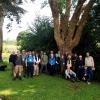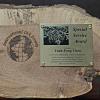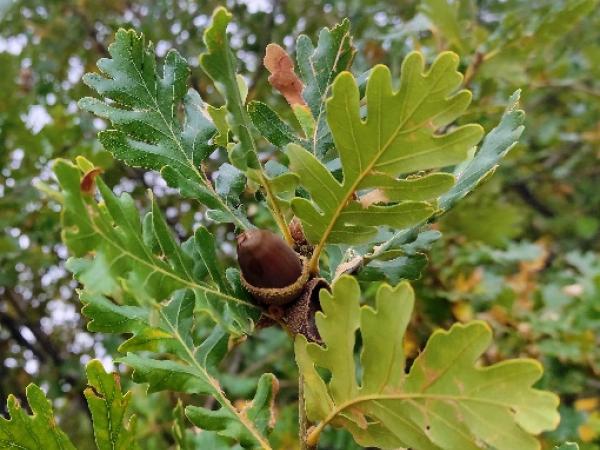Editor's Picks
Plant Focus
Ian Pearse
Published May 2016 International Oaks No. 27: 245–254
Abstract
Masting, the highly variable and synchronous production of fruits or seeds, is an important reproductive strategy in oaks. Variable acorn production has broad consequences that cascade through oak ecosystems. While the effects of masting are widespread, researchers have only recently begun to understand the factors that control the boom and bust pattern of seed crops. One point of controversy in explaining masting is the degree to which resources and weather patterns explain variation in seed set between years. Theories that emphasize resources suggest that large seed crops require more resources than can be accumulated in a single year. Theories that emphasize weather point out that populations of oaks synchronize their production over hundreds of kilometers, and it would be difficult to explain such geographic patterns without equally large geographic patterns of weather. I argue that to disentangle the relative role of weather and resources in oak masting, we need to better understand the fundamental resource dynamics of oak trees and to explore the mechanisms by which oaks perceive and respond to weather. I highlight the key theories that explain oak masting, and I suggest further experiments and observations that can disentangle different explanations of masting.
Keywords
acorn production, pollination, resource budget
References
Abrahamson, W.G., and J.N. Layne. 2003. Long-term patterns of acorn production for five oak species in xeric Florida uplands. Ecology 84: 2476-2492.
Bohlenius, H., T. Huang, L. Charbonnel-Campaa, A. M. Brunner, S. Jansson, S. H. Strauss, and O. Nilsson. 2006. CO/FT regulatory module controls timing of flowering and seasonal growth cessation in trees. Science 312: 1040-1043.
Cecich, R. A., and N. H. Sullivan. 1999. Influence of weather at time of pollination on acorn production of Quercus alba and Quercus velutina. Canadian Journal of Forest Research 29:1817-1823.
Elkinton, J.S., W M. Healy, J.P. Buonaccorsi, G.H. Boettner, A.M. Hazzard, H.R. Smith, and A.M. Liebhold. 1996. Interactions among gypsy moths, white-footed mice, and acorns. Ecology 77: 2332-2342.
Holland, E.P., and A. James. 2015. Assessing the efficacy of population-level models of mast seeding. Theoretical Ecology 8: 121-132.
Imada, M., T. Nakai, T. Nakamura, T. Mabuchi, and Y. Takahashi. 1990. Acorn dispersal in natural stands of mizunara (Quercus mongolica var. grosseserrata) for twenty years. Journal of the Japanese Forestry Society 72: 426-430.
Isagi, Y., K. Sugimura, A. Sumida, and H. Ito. 1997. How does masting happen and synchronize? Journal of Theoretical Biology 187: 231-239.
Jansen, P.A., F. Bongers, and L. Hemerik. 2004. Seed mass and mast seeding enhance dispersal by a neotropical scatter-hoarding rodent. Ecological Monographs 74: 569-589.
Janzen, D.H. 1971. Seed predation by animals. Annual Review of Ecology and Systematics 2: 465-492.















